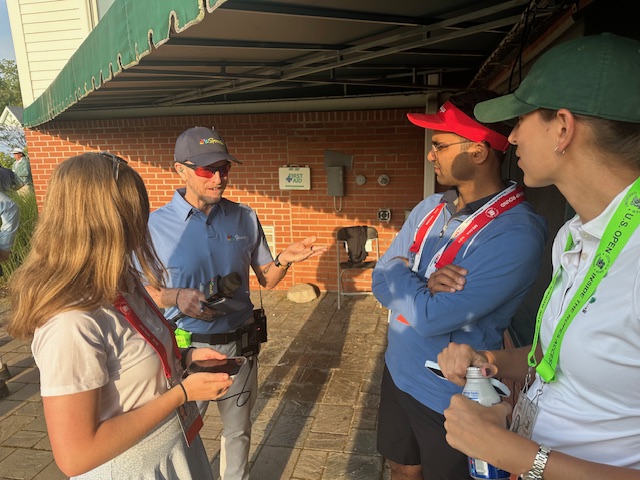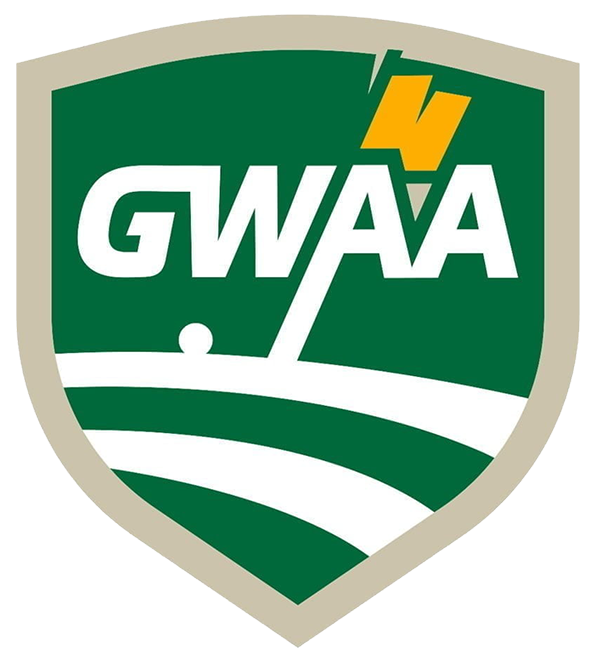By AMAN MISRA
OAKMONT, Pa. – “You rascal, you. How did you get here?” exclaimed longtime writer Alan Shipnuck as we fist-bumped on the media dining patio overlooking the range at Oakmont Country Club. It felt like a full-circle moment, one I didn’t dare imagine two decades ago from across the world when I’d badger Shipnuck on Twitter. Growing up in Calcutta (known today as Kolkata), India during the early 2000s, I’d stay up nights watching the major championships. The final putt usually would drop at about 4 a.m. Indian Standard Time, leaving me little time to rush to school on Monday morning.
Two decades later, I was in the media tent for the 2025 U.S. Open Championship at Oakmont. My “coming to America” moment culminated in August 2022, when I accepted a Ph.D. position in journalism and media at the University of Tennessee, Knoxville. The first thing I did after signing on the dotted line was to check the drive time from Knoxville and Augusta, Ga. (just over five hours).
While I’ve yet to cover the Masters, it was nice to finally be in the same time zone when the final putt at a major dropped on Sunday night. As one of the two inaugural Herbert V. Kohler/Golf Writers Association of America scholarship winners, I was granted the luxury of unfettered access between the ropes at my first major. During the week, while golf played out on Oakmont’s punishing layout, the journalist (and media scholar) in me was interested in how media was produced at one of the game’s four biggest events.
As Golf.com’s Sean Zak suggested, the golf world functions in concentric circles. Standing on the practice range, Zak artfully pointed out agents, caddies, coaches, family, and friends of players who act as gatekeepers – essentially protecting the interests of the best golfers on the planet. If information is the coinage of our profession, one must find a way to keep moving between these concentric circles to tell stories that the golfer’s public-relations team doesn’t already break itself. So how does one do this in the rapidly evolving American golf media?
The answer might very well lie in spending time on the range. Watch golfers, build relationships and trust with agents who in turn share important (and if you’re lucky, breaking news). Shipnuck added that on final days of majors, most media people are glued to the screen in the media center for ease of access. This is crucial, especially if multiple golfers are in contention, just like that memorable rainy Sunday at Oakmont. It’s much easier to follow in person if one or two golfers are in contention (and are hopefully in the same final group). Sometimes, writers from the same publication might end up having to choose whom to follow, if multiple golfers in contention are playing in different groups.
Stories that journalists such as The Athletic’s Gabby Herzig chase on this long walk during the final 18 at a major might lie in recognizing the golfer’s entourage outside the ropes. Inside-the-ropes access, while useful – is sometimes limited to experiencing a rare out-of-the-ordinary moment or ruling which the journalist can then be the first to report in detail. It’s an unspoken cliché in the press room that a reporter’s life is all about timing and coincidences.
No one knows this better than Rex Hoggard, a veteran on the golf beat who showed us GWAA scholars around Golf Channel’s broadcast setup. It included a makeshift studio whose frontage overlooked Oakmont’s clubhouse. Hoggard took us in through the back – the steps overlooked the past U.S. Open champions’ parking just a few feet from the production building. Inside this studio, some of the golf media’s most recognizable commentators discussed and debated the everyday ongoings at Oakmont.

The studio is looked after a multitude of people who make sure everything needs to be where it is when the production guys go live. Hoggard, while getting his makeup fixed, narrated three instances over the years of having to fly home to Orlando, Fla., overnight, courtesy of breaking news related to Tiger Woods’ career. It can and does get stressful.
Early in the week, Johnny Miller, the 1973 U.S. Open winner at Oakmont and a former NBC lead analyst, made an appearance on the broadcast with longtime friend Dan Hicks sparking memories of their time in the booth together for over two decades. Miller was the sound of my youth. Most people want to play a golf hole narrated by Jim Nantz. Sure, but give me Miller any day of the week. Let him peek into my soul, pry my weaknesses open, and call me out for the flawed golfer that I am.
During a press conference on Saturday, Miller held court alongside Jack Nicklaus, who won here in 1962. Together, they ruminated about their careers and opined on the current state of golf. When Golf Digest playing editor Luke Kerr-Dineen asked Miller about current world No. 1 Scottie Scheffler’s swing, the veteran analyst went back in time, and it felt like he was back in the booth, breaking down swings. Nicklaus, for his part, nodded and listened – offering occasional insights. All this, in front of a packed media room where TVs on all sides flashed memories of the 2000 U.S. Open at Pebble Beach, won in spectacular fashion by Woods. In the TV tower? Miller and Hicks.
It became clear to me that it was impossible to talk golf without referring to its past. As French historian Pierre Nora once wrote about lieux de memoria or sites of memory, because these sites are no longer milieux de mémorie – real environments of the same memory. By recalling events, journalists appropriate the past in order to make sense of the present. In referring to Miller’s and Nicklaus’ wins, media commentators compared their actions and stories to those of 2025 winner J.J. Spaun. This, in turn, gave viewers context about Oakmont’s treacherous past as a golf layout and its place in American golf history, furthering the mythmaking abilities common to American sports storytelling.
This was all the more evident when the USGA’s Julia Pine granted us access to the Oakmont clubhouse. Remnants of Oakmont’s past glory lined the walls. In the run-up to the Open, club historian Dave Moore played an important role, telling the golf media (and fans back home) the story of Oakmont and its role in shaping broader history, most notably the story of the Pennsylvania Turnpike written by Golf Digest’s Shane Ryan. The club is one of many in the United States which act as memory keepers, reminding the public of the heroic deeds which make up large part of their (usually) century long existence. Moore, who consults at several well-known golf courses in western Pennsylvania, pointed out that these narratives sometimes exist where there seem to be none. For instance, in a video feature for Golf.com, he told the story of Oakmont’s hidden booze lockers inside the men’s locker room, a feature which dated to Prohibition-era Pittsburgh.
On the five-hour drive east to Philadelphia, I thought of the nomadic life led not just by professional golfers but also writers who divide their weeks covering tournaments. It’s a tough task to balance documenting the world’s best golfers and finding time for a family life given the long hours and travel. For a sportswriter, weekends are never off. Golf has an incredibility rich but complicated history. Journalists aren’t simply tasked with writing the first draft of history, but in doing so, are also actively reinterpreting and revising past narratives to address current issues.
More scholarly attention should be paid to understanding the roles played by the golf media in the broader American sports-storytelling landscape. In these narratives of media production lie lessons for the next generation of golf storytellers. A lot of the learnings and observations from this week will be incorporated in my sports reporting class at UT Knoxville’s School of Journalism and Media.
Furthermore, conversations with golf media add insight to my research projects. While my primary aspiration remains to work as a scholar-teacher in higher education, I value this opportunity to be “boots on the ground” and hope to continue attending professional and amateur golf tournaments. To the folks at the Kohler Co. and the GWAA, thank you for opening this door for me. I intend to walk through it and give back to the next generation in American golf.
Aman Misra, who is pursuing a doctorate in journalism and media at the University of Tennessee, is from Kolkata, India.


